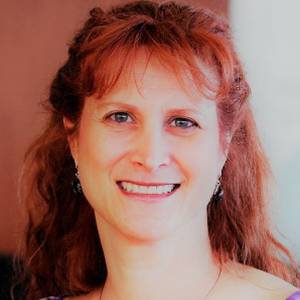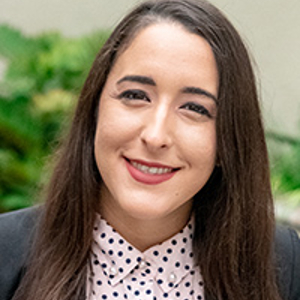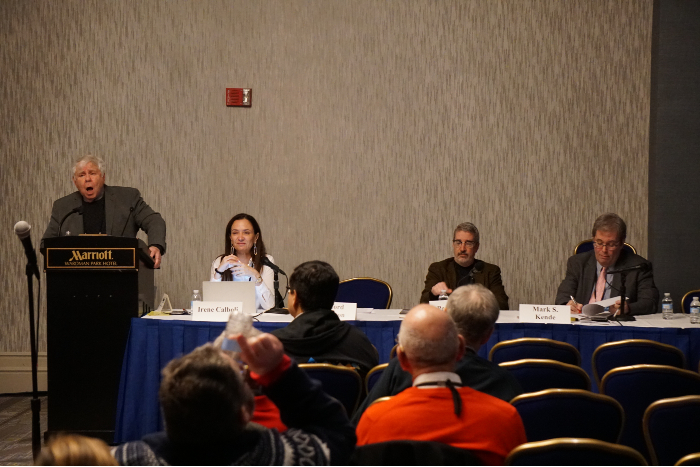What made you get involved with the Section on Art Law?
Yvette Liebesman: I’ve always had an interest in art. Most of our members are intellectual property professors who have an interest in the visual arts and tend to focus their scholarship in that area. Many focus on trademark law concerning visual things and art law in general.
Emily Behzadi: I may be in the minority that focuses on cultural heritage issues. I teach intellectual property because it is all encompassing. The Art Law section was a perfect fit for my interests and my research and writing topics. Throughout the past two years, I have volunteered with the section and participated in successful programming.
What is the section’s leadership structure?
YL: Our section has a very good rapport. We try to recruit our executive board members and use succession planning. We don’t turn over the entire board every year. We like the Chair-Elect to be a member who was on the board the previous year. Yvette Joy Liebesman, Saint Louis University School of Law Photo courtesy of Saint Louis University School of Law Emily T. Behzadi, California Western School of Law Photo courtesy of California Western School of Law
What are your goals for this section this year?
YL: I’m looking forward to more opportunities for in-person events. We are all looking forward to an in-person Annual Meeting in San Diego. Saint Louis University School of Law and University of Missouri School of Law held a works-in-progress conference in-person in February in St. Louis. We had 75 attendees and it was a success.
How do your section members interact and collaborate outside of the AALS Annual Meeting?
YL: Outside of the Annual Meeting, our section hosts events where our members can collaborate. We have a works-in-progress event for IP scholars every February, which will be hosted at Suffolk University Law School in Boston in 2023. Every August we have the Intellectual Property Scholars Conference, which will be at Stanford University this year. Other art law scholars host an annual works-in-progress program. We are very collaborative and welcoming, so if someone has an idea for a conference, they are encouraged.
EB: We are lucky that we all share a passion for art, yet we are scholars in different areas of law. That commonality and diversity allow us to collaborate with different sections and members.
How do you go about planning section webinars?
YL: We welcome ideas for webinars and encourage members to pursue their ideas. Many of our topics come from our planning for the Annual Meeting. Topics that become webinars are usually time-sensitive current events that may not be relevant by the time of the Annual Meeting. Whoever wants to pursue a webinar topic has full control over the planning and execution, and the board provides them with support.
EB: Especially during the past two years of COVID, there have been a lot of events in the intellectual property and cultural heritage realm that made for great webinar topics.
What are you planning for the 2023 Annual Meeting?
YL: We have an interesting program called “When Taking a Donation in Return for Naming Rights Becomes a Liability.” We are involving the Sections on Contracts, Intellectual Property, and Trusts and Estates. Micah Parzen, the CEO of The Museum of Us, is going to be our speaker. The museum recently changed their name, which relates to the work we do. We have solicited a call for papers for others who are interested in being on the panel.
How did you become interested in art law?
YL: In my family, there has always been an interest in art. In 2015, I coauthored an article with Elizabeth Townsend Gard in IP Theory about artist Kamil Kubik, a Czechoslovakian refugee who left as the Iron Curtain was falling. As a refugee, it was difficult to pinpoint his copyright rights based on where and when he painted. At one point, he was a citizen of nowhere, and that affected his copyright. This piece was my first taste of writing about art law and I was hooked.
EB: I have master’s and undergraduate degrees in art history. I wanted to find something that intersected law and art. I discovered art law in law school and never looked back.
How has art law and your approach to teaching changed over time?
EB: I’m a junior faculty member and this will be my third year of full-time teaching. My classes have changed each year. With art law, I can continuously add new content to my classes. For example, I do a debate between scientists and Native Americans when teaching about artifacts and human remains. The debate makes students talk about these hot button issues. I use this exercise when discussing Confederate monuments, too.
During COVID-19 and remote learning, it was often difficult to recreate debate and discussion in the way that it would naturally occur during in-person class. Especially when, as the professor, I had to toggle back and forth between sharing a visual and seeing my students on the screen.
YL: Intellectual property and art law is neat in that as a professor I can share different media, such as music, videos, and art. I want to expose my students to the idea that there are many fun aspects to law. I like to include a painting day in my class. How can you have an art law class and not a day where you’re making art? Engagement is important when teaching art law.
I like to provide my students with an array of articles and allow them to read at least one. Then, everyone can participate in the discussion during the following class. I want them to read about what interests them most. The articles consist of news concerning art law, such as Kat Von D being sued for copyright infringement over the use of a Miles Davis photograph for a tattoo. These topics provide the basis for interesting debates. When you are discussing a fun topic, it becomes infectious.


 Emily T. Behzadi, California Western School of Law
Emily T. Behzadi, California Western School of Law